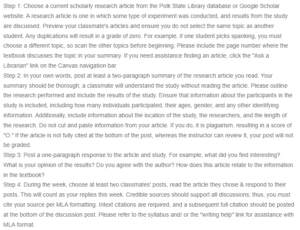Article Summary-Rising Conflict Confrontations and Adolescents’ egocentrism Among Youths
The article explores the concerns of rising conflict confrontations and adolescents’ egocentrism among youths. The writers define egocentrism as an emotional teenage state that acts as the basis of distancing themselves from the community and building up interpersonal and communicative battles that hamper effective social links and positive relationships. Vyazovova Natalia and Melekhova Viola, with a group of adolescents attending a club, conducted this study. The sample size comprised 42 people, 26 girls and 16 boys aged 12-15 years (Vladimirovna and Melekhova 4). The study’s location was Russia, and it is eight pages long. The researchers are Melekhova Viola Mikhailovna, a candidate of psychological sciences and associate professor at Derzhavin Tambov State University, and Vyazovova Natalia Vladimirovna, a psychological sciences candidate and an associate professor and head of the department of Moscow psychological and social university. The article found that egocentrism orientation is demonstrated by 43 percent of teenagers, while the average conflict resistance level was 23.8 percent (Vladimirovna and Melekhova 5). Therefore, the article concluded that the level of egocentrism in teenagers is slightly higher in boys than in girls. This disparity is clarified by the greater need for boys for self-assertion in early adolescence and their reduced ability to decenter.
Vladimirovna and Melekhova (2022) affirm that the many aspirations cause adolescent egocentrism and conflict resistance, and their expectations about transforming their social status make them look into the future, building a temporal development perspective (p.1). Nonetheless, this situation is worsened by the ever-rising societal demands barring them from distinguishing themselves and their self-identity. The contradiction between the desire of teenagers to recognize their self-affirmation, skills, and their position incites protest behavior. The one aspect that interested me was that egocentrism naturally results in personal fables among the youth. This is the belief that one is peculiar, ordained to have a fabled, heroic, and legendary life. The article results are correct and viable. The level of egocentrism is higher among boys and girls because of their desire for self-affirmation. Therefore, I agree with the author that egocentrism is caused by the youth’s desire to recognize their abilities, self-confidence, and position on an issue. The article’s information that egocentrism results naturally in personal fables relates to the textbook because the textbook states an element of adolescent egocentrism is characterized by a teenager’s conviction that their feelings, experiences, and thoughts are peculiar, more awful, and more wonderful than any other person (Stassen 1022).
Works Cited
BERGER, KATHLEEN STASSEN,. Invitation To The Life Span+ Achieve Read & Practice For Invitation To The Life Span 1-Term… Access. Worth Pub, 2018.
Vladimirovna, Vyazovova Natalia, and Melekhova Viola Mikhailovna. “Egocentrism As A Conflict Factor Of A Teenager.” Process Management and Scientific Developments (2022): 95. https://doi.org/10.34660/INF.2022.97.94.036. P.1-8.
ORDER A PLAGIARISM-FREE PAPER HERE
We’ll write everything from scratch
Question
Step 1: Choose a current scholarly research article from the Polk State Library database or Google Scholar website. A research article is one in which some type of experiment was conducted, and results from the study are discussed. Preview your classmate’s articles and ensure you do not select the same topic as another student. Any duplications will result in a grade of zero. For example, if one student picks spanking, you must choose a different topic, so scan the other topics before beginning. Please include the page number where the textbook discusses the topic in your summary. If you need assistance finding an article, click the “Ask a Librarian” link on the Canvas navigation bar.

Rising Conflict Confrontations and Adolescents’ egocentrism Among Youths
Step 2: In your own words, post at least a two-paragraph summary of the research article you read. Your summary should be thorough; a classmate will understand the study without reading the article. Please outline the research performed and include the results of the study. Ensure that information about the participants in the study is included, including how many individuals participated, their ages, gender, and any other identifying information. Additionally, include information about the location of the study, the researchers, and the length of the research. Do not cut and paste information from your article. If you do, it is plagiarism, resulting in a score of “O.” If the article is not fully cited at the bottom of the post, whereas the instructor can review it, your post will not be graded.
Step 3: Post a one-paragraph response to the article and study. For example, what did you find interesting? What is your opinion of the results? Do you agree with the author? How does this article relate to the information in the textbook?
Step 4: During the week, choose at least two classmates’ posts, read the article they chose & respond to their posts. This will count as your replies this week. Credible sources should support all discussions; thus, you must cite your source per MLA formatting. Intext citations are required, and a subsequent full citation should be posted at the bottom of the discussion post. Please refer to the syllabus and/ or the “writing help” link for assistance with MLA format.


